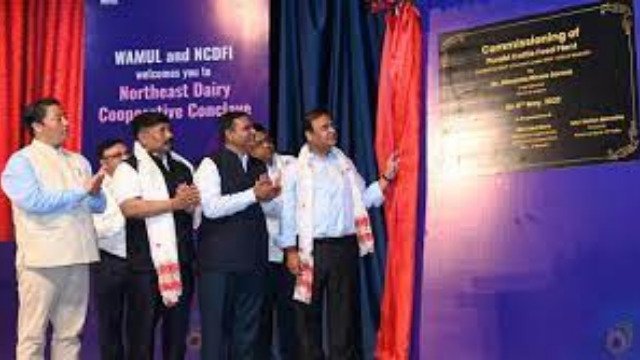HT Digital
Thursday, October 24: Assam has seen a significant boost in agricultural exports, with an 85% increase over the past six years, according to the state’s Minister for Agriculture and Horticulture, Atul Bora. Speaking at the North East Rural Conclave organized by the Confederation of Indian Industry (CII) in Guwahati on October 23, 2024, Bora highlighted the pivotal role supportive government policies have played in this achievement. He stressed that with the right synergy between various government departments and stakeholders, Assam can continue on this path of growth, particularly in export-oriented farming.
The North East Rural Conclave marked an important event in the region’s economic and industrial transformation, underscoring the significance of rural development for both social and economic progress. The conclave provided a dynamic platform for stakeholders to address the emerging demands in agriculture, non-farm products, and service sectors. The discussions centered on creating a balanced approach to both farm and non-farm growth while integrating technological advancements into the rural economy.
Minister Bora emphasized that access to financial resources is critical for the continued success of Assam’s agriculture sector, which remains the backbone of the state’s economy. He pointed out that modern farming techniques and sustainable practices require substantial investment, and ensuring financial capital is available to farmers is essential. By doing so, the state can improve productivity and export potential, positioning itself as a major agricultural player in both domestic and international markets.
Munindra Sarma, Secretary of the Panchayat and Rural Development Department of Assam, echoed these sentiments. He outlined several key government initiatives aimed at uplifting the rural economy and improving the ease of living for its residents. These initiatives include rural housing programs, job card schemes, livelihood missions, and women empowerment projects, all of which are contributing to the state’s sustainability goals and overall rural development. One noteworthy initiative Sarma mentioned was commercial tree plantation, which not only enhances environmental conservation efforts but also provides an additional source of income for rural communities.
Loken Das, Chief General Manager of NABARD, also spoke at the event, emphasizing the abundant opportunities in the North Eastern Region’s agri-horti sector. He noted that addressing local demand deficits and promoting the non-farm sector are critical for supplementing rural income. He further explained that post-production efforts need to be enhanced, particularly in terms of processing and packaging, to fully capitalize on these opportunities. Additionally, diaspora marketing strategies could help expand the reach of Assamese products to global markets, bringing in higher revenues for local farmers.
Ashwin Noronha, Chief Airport Officer at Lokpriya Gopinath Bordoloi International Airport, highlighted the recent infrastructural developments that are expected to further boost Assam’s agricultural exports. With the introduction of wide-body aircraft landing capabilities and a state-of-the-art cargo facility, Noronha urged stakeholders to develop strategies to effectively utilize this infrastructure. He emphasized that while products from outside are entering the state, it is equally important to create mechanisms to export Assam’s regional products efficiently. This, he noted, would significantly enhance the state’s presence in the global market.
Overall, the conclave made it clear that with the right blend of supportive policies, financial resources, and infrastructure, Assam’s agricultural sector is poised for continued growth. The state is not only enhancing its productivity but also making significant strides in sustainable farming practices and rural empowerment. The collaboration between various government bodies, financial institutions, and private stakeholders will be key in driving Assam’s agricultural exports even further, ensuring that the region’s rural economy thrives in the years to come.







